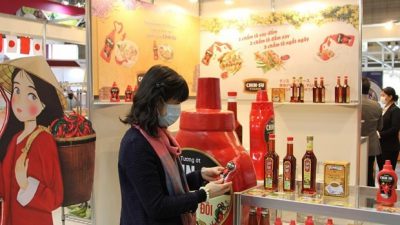
|
Recent information about Vietnam importing rice from India has attracted attention from public opinion. Specifically, Indian food enterprises have signed contracts to export 70,000 tonnes of 100% broken rice to Vietnam for shipments in January and February 2021, at a price of about US$310 per tonne. |
|
This is the first time Indian rice has been exported to Vietnam, causing many people to worry about our country’s lack of rice for domestic demand. However, according to representatives of authorised agencies and rice processing and export enterprises, it is completely normal for Vietnam to import 100% broken rice from India at this time. The reason being that the current demand for 100% broken rice in Vietnam is huge, serving flour and vermicelli processing, etc, while the domestic supply is quite scarce. This is also consistent with the process of restructuring Vietnam’s rice industry in recent years. Accordingly, Vietnam has a policy of reducing the area of medium quality rice, increasing the area of fragrant rice, specialty rice, in order to boost exports to high quality and high-priced markets, and at the same time serving the needs of the domestic market, which is also aiming for more fragrant rice. As such, the segment of broken rice for processing has been be reduced and is sometimes in short supply. Vietnam is not in short supply of rice serving domestic consumption, export and livestock. In 2020, the whole country harvested 42.7 million tonnes from its paddies in January 2021, about 1.2 million tonnes of rice will be harvested from the early winter-spring crop in the Mekong Delta. On the other hand, the plan to produce winter-spring rice from 2020 to 2021 and for the whole year 2021 is progressing normally. Regarding rice exports, the first quarter of 2021 is still forecasted to be stable as traditional export markets of Vietnam, such as the Philippines and Africa, continue to sign contracts to buy rice from Vietnam with a good price. In 2021, the EU-Vietnam Free Trade Agreement (EVFTA) and a number of other signed free trade agreements will have a more positive impact on rice exports. From another perspective, the fact that Vietnam has imported 100% broken rice from India should also be noted by the authorities to actively seek ways to stabilise the domestic rice market, avoiding the situation in which some enterprises take advantage of low prices, importing rice from abroad for processing and then “turning” it into Vietnamese rice. If this happens, it will seriously affect the reputation of Vietnam rice. Key rice-growing localities also need to clearly inform on this issue to farmers to avoid misunderstanding that the market is in urgent need of medium quality rice, leading to a shift in cultivated rice varieties, affecting the country’s long-term plans for rice production, processing and export. Source: Nhan Dan Online |

